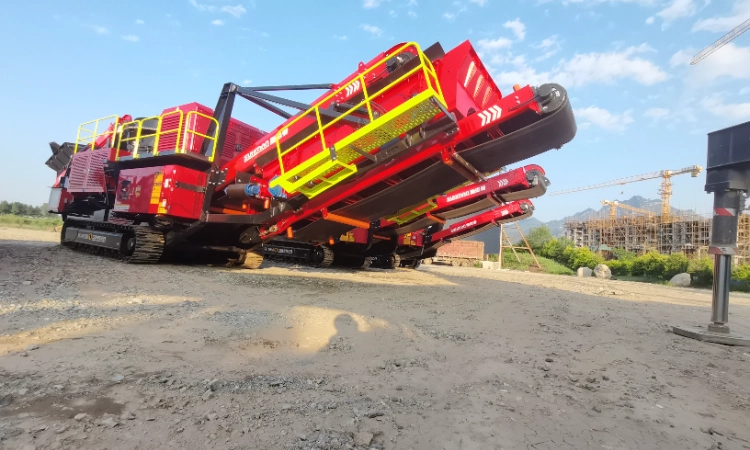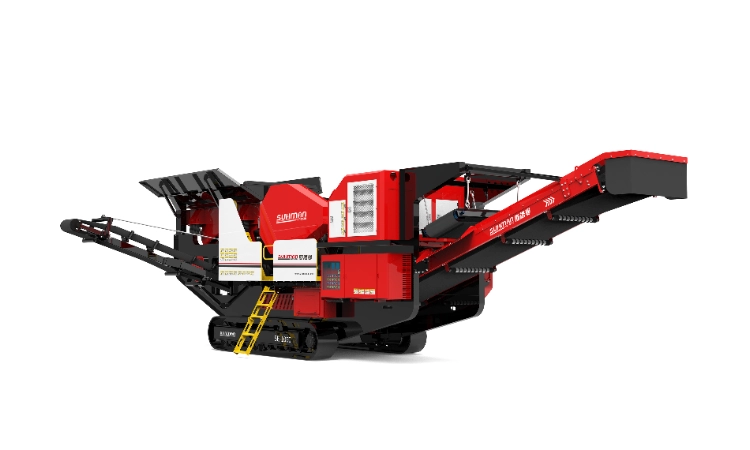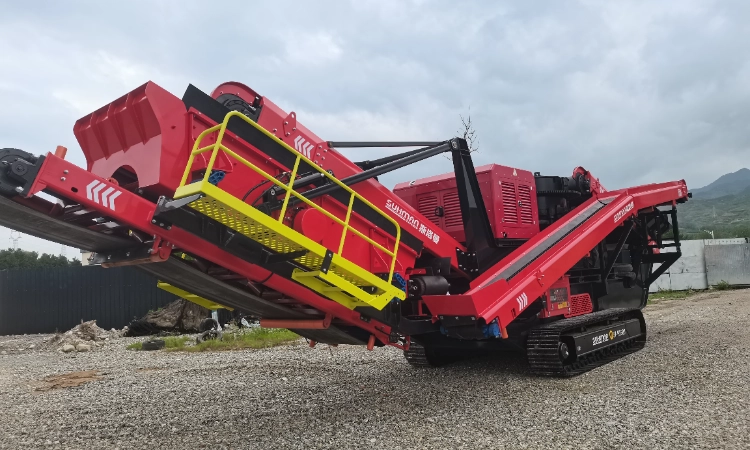Mobile Crushing Plant vs. Mobile Screening Plant: Key Differences, Applications, and Operational Insights
Release time: 2025-02-15
Table of Contents
- Introduction to Mobile Processing Equipment
- What is a Mobile Crushing Plant?
- 2.1 Definition and Core Components
- 2.2 Types of Mobile Crushers
- 2.3 Operational Workflow
- 2.4 Key Applications
- What is a Mobile Screening Plant?
- 3.1 Definition and Core Components
- 3.2 Types of Mobile Screeners
- 3.3 Operational Workflow
- 3.4 Key Applications
- Key Differences Between Crushing and Screening Plants
- 4.1 Functional Objectives
- 4.2 Equipment Configuration
- 4.3 Output Requirements
- 4.4 Industry-Specific Use Cases
- Technical Specifications Comparison
- 5.1 Capacity and Throughput
- 5.2 Power Consumption
- 5.3 Mobility and Setup Time
- Choosing the Right Equipment for Your Project
- Maintenance and Cost Considerations
- Future Trends in Mobile Processing Technology
1. Introduction to Mobile Processing Equipment
Mobile crushing and screening plants have revolutionized the mining, construction, and recycling industries by offering unparalleled flexibility and efficiency. Unlike stationary systems, these mobile units can be rapidly deployed to job sites, reducing transportation costs and enabling on-site material processing. This guide explores the critical distinctions between Mobile Crushing Plants and Mobile Screening Plants, providing actionable insights for selecting the optimal equipment.
2. What is a Mobile Crushing Plant?
2.1 Definition and Core Components
A Mobile Crushing Plant is a self-propelled machine designed to reduce large rocks, ores, or demolition waste into smaller, manageable sizes. Key components include:
- Primary Crusher (Jaw, Cone, or Impact Crusher)
- Feeder System (Vibrating Grizzly or Apron Feeder)
- Conveyor Belts for material transfer
- Power Unit (Diesel or Electric)
- Hydraulic System for adjustments

Example of a high-efficiency Mobile Multi Cylinder Cone Crusher.
2.2 Types of Mobile Crushers
| Type | Description | Best For |
|---|---|---|
| Jaw Crusher | Crushes materials via compressive force | Hard rocks (Granite, Basalt) |
| Cone Crusher | Uses gyrating mantle for finer output | Medium-hard aggregates |
| Impact Crusher | High-speed rotor for shaping applications | Recycling, soft materials |
2.3 Operational Workflow
- Material Loading: Raw materials are fed into the hopper.
- Primary Crushing: Reduced to 150–300 mm pieces.
- Secondary Crushing: Further refined to 0–51 mm (e.g., using a Mobile Multi Cylinder Cone Crusher).
- Conveying: Sized material transported to stockpiles.
3. What is a Mobile Screening Plant?
3.1 Definition and Core Components
A Mobile Screening Plant separates crushed materials into graded sizes using vibrating screens. Key components:
- Vibrating Screen Deck (Single or Multi-layer)
- Feed Hopper
- Conveyor System for sorted materials
- Power Source and Chassis
3.2 Types of Mobile Screeners
| Type | Description | Best For |
|---|---|---|
| Scalping Screen | Removers oversized material before crushing | Pre-processing |
| Inclined Screen | Separates materials into 2–4 sizes | Aggregate grading |
| Trommel Screen | Rotating drum for fine material separation | Compost, recycling |
3.3 Operational Workflow
- Material Feeding: Pre-crushed material loaded onto the screen.
- Vibration Sorting: Particles sorted by size via screen meshes.
- Stockpiling: Graded materials conveyed to designated piles.
4. Key Differences Between Crushing and Screening Plants
4.1 Functional Objectives
| Aspect | Mobile Crushing Plant | Mobile Screening Plant |
|---|---|---|
| Primary Role | Size reduction | Material classification |
| Output Focus | Produces uniformly sized fragments | Separates materials into graded sizes |
| Stage in Process | Early to mid-stage processing | Post-crushing or standalone sorting |
4.2 Equipment Configuration
| Component | Crushing Plant | Screening Plant |
|---|---|---|
| Core Machinery | Crusher (Jaw/Cone/Impact) | Vibrating Screen Deck |
| Power Demand | High (250–512 kW) | Moderate (3.7–15 kW) |
| Mobility Features | Heavy-duty tracks for rugged terrain | Lighter chassis for quick relocation |
5. Technical Specifications Comparison
5.1 Capacity and Throughput
| Parameter | Mobile Crushing Plant (SY-HP300 Example) | Mobile Screening Plant |
|---|---|---|
| Processing Capacity | 150–350 t/h | 150–500 t/h |
| Max Feed Size | 200 mm | 100 mm |
| Discharge Range | 0–51 mm | 0–100 mm (multi-layer screening) |
5.2 Power Consumption
| System | Power Requirement |
|---|---|
| Crushing Plant | 250 kW (Crusher) + 79 kW (Track System) |
| Screening Plant | 15 kW (Conveyor) + 7.5 kW (Screen) |
6. Choosing the Right Equipment for Your Project
- Crushing Plants are ideal for:
- Quarrying primary rock.
- Demolition waste recycling.
- Screening Plants excel in:
- Grading aggregates for construction.
- Separating topsoil from debris.
7. Maintenance and Cost Considerations
- Crushing Plant Maintenance: Frequent wear-part replacements (mantles, liners).
- Screening Plant Maintenance: Screen mesh cleaning and tension adjustments.
8. Future Trends in Mobile Processing Technology
- Hybrid Power Systems: Reducing fuel consumption via electric-diesel combos.
- AI-Driven Automation: Real-time adjustments for optimal output.
By understanding the distinct roles and synergies between Mobile Crushing Plants and Mobile Screening Plants, industries can optimize their operations for efficiency and cost-effectiveness. For advanced crushing solutions, explore the Mobile Multi Cylinder Cone Crusher, engineered for high-capacity performance in demanding environments.



